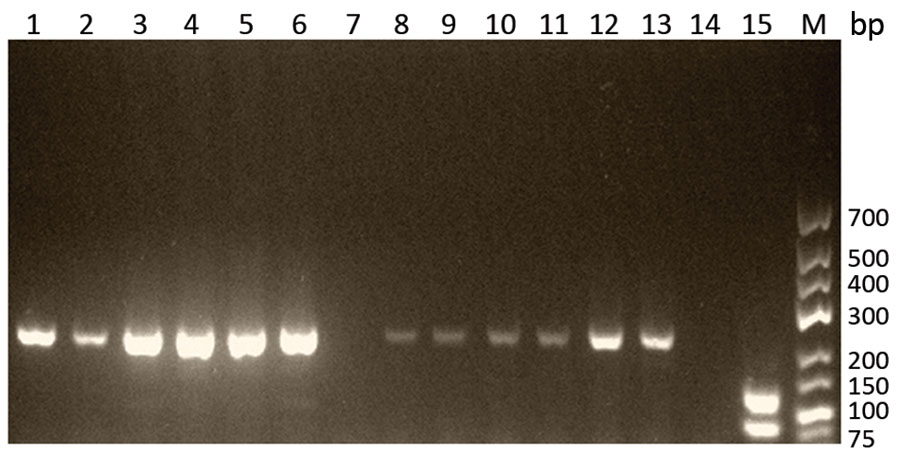Volume 26, Number 8—August 2020
Research
Human Outbreak of Trichinellosis Caused by Trichinella papuae Nematodes, Central Kampong Thom Province, Cambodia
Figure 2

Figure 2. Gel electrophoresis (2% agarose) of products of Trichinella multiplex PCR using samples from patients in Cambodia. Lanes 1–6, patients 1–6: samples were extracted from muscle tissue and show the 240-bp band typical for Trichinella papuae nematodes. Lane 7, patient 7: sample was extracted from muscle tissue and showed no band. Lanes 8–13, patients 8–13: samples were extracted from larvae and show the 240-bp band typical for T. papuae nematodes. Lane 14, negative control; lane 15, positive control (T. nativa showing the expected 127-bp band); lane M, molecular mass ladder.
Page created: May 20, 2020
Page updated: July 17, 2020
Page reviewed: July 17, 2020
The conclusions, findings, and opinions expressed by authors contributing to this journal do not necessarily reflect the official position of the U.S. Department of Health and Human Services, the Public Health Service, the Centers for Disease Control and Prevention, or the authors' affiliated institutions. Use of trade names is for identification only and does not imply endorsement by any of the groups named above.